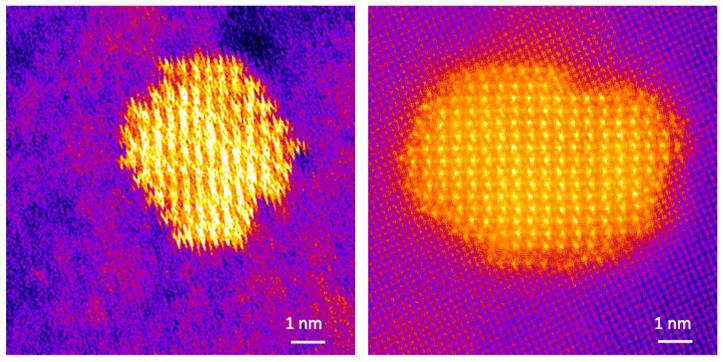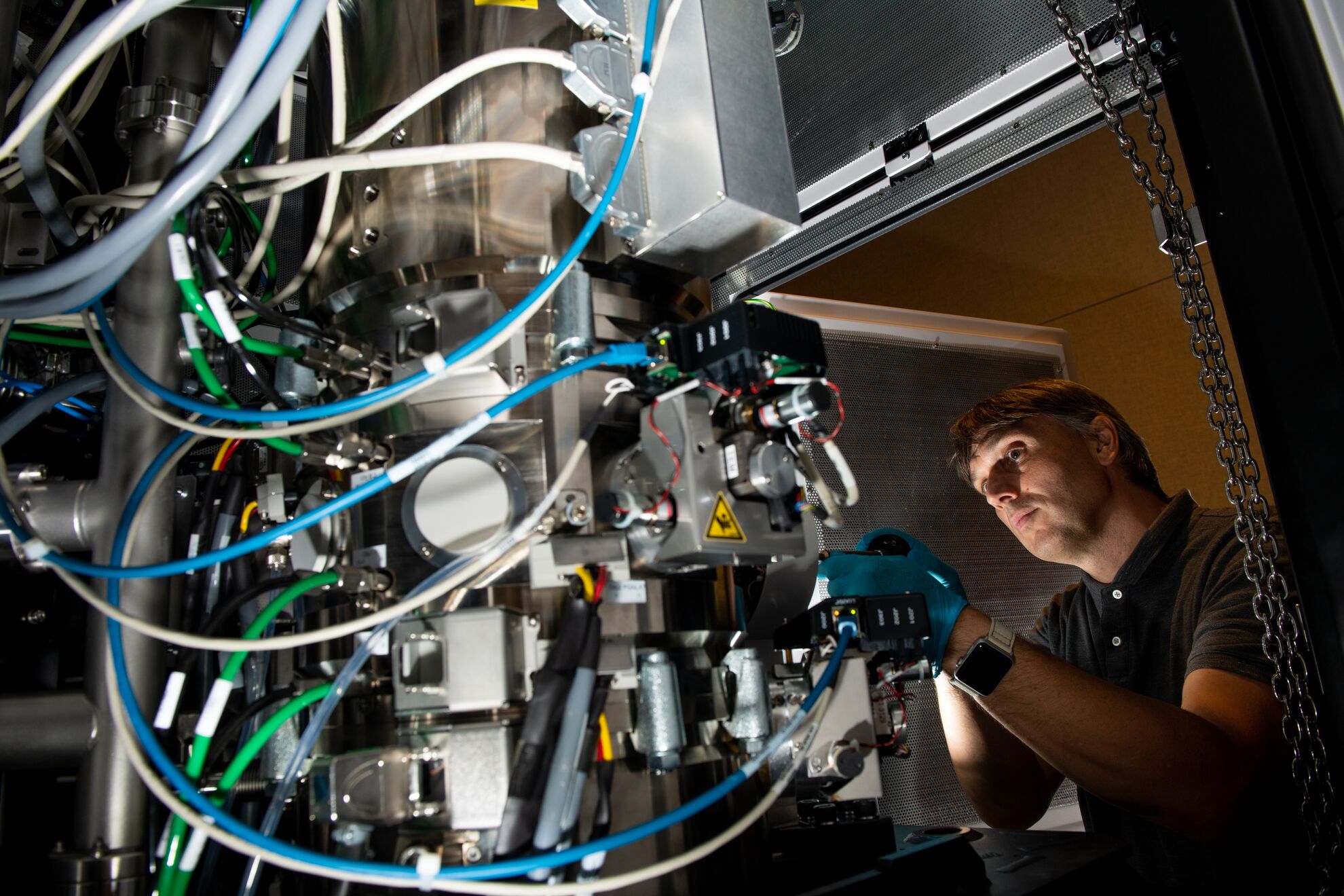They say a picture is worth a thousand words. But that's only true if it's not blurry, or grainy, or the subject's head is not out of the frame. These kind of epic fails plague even experienced photographers. The same is true for experienced scientists acquiring images from precision instruments.
Libor Kovarik is a material scientist and prolific inventor at Pacific Northwest National Laboratory (PNNL). But even he has tasted failure when magnetic fields, vibrations, or temperature fluctuations caused distorted images.
Kovarik and his colleagues were trying to capture images of an aluminum alloy in another facility when a stray magnetic field distorted them.

"If the electrical lines and switches are not wired and shielded in a special way, there is going to be a background magnetic field," he said.
Scientists working with precision instruments know that power cords and cabling, vibrations from air-handling units and other factors can cause epic imaging failures. The challenge is eliminating the effects of these essential elements from the laboratory.
That's why scientists and engineers at PNNL worked with the building's architects to design a space within the new Energy Sciences Center that would be protected from these intrusions.
The new high-performance instrumentation lab provides four isolated cells doubly protected from any external vibrations by separate vibration-dampening foundations and an inlaid vibration-free table to house delicate instruments, including some of the world's most vibration-sensitive electron microscopes. Power cords and electronic cabling are housed in a sealed chamber isolated from the instruments, and the temperature in each chamber varies less than 0.1 degree Celsius while the instruments are in use.
These scientists are not just after pretty pictures. They are developing new materials and working to improve the efficiency of the chemical transformations that will someday provide renewable energy for our homes and businesses. The stakes are high for these scientists. When you are trying to see the placement of each individual atom in a new material created in the laboratory, vibrations, temperature fluctuations, and stray electromagnetic rays are the enemy.
Sometimes a single atom is better than many
In recent years, scientists have discovered that certain arrangements of individual atoms supported on a surface, like a cherry on a cupcake, make them special. These distinctive materials confer useful properties. For instance, some single atom catalysts show promise for promoting conversion of biomass and waste carbon at room temperature and at significantly lower costs not possible today. These single atom catalysts are the subject of intense research to figure out how to make them operate on a large scale over a long period of time. And those investigations require studying them, taking atomic-scale "pictures" of them, and correlating their structure to their activity.
"We are searching for metal-oxide supports with a high density of sites that interact strongly with catalytically active metal atoms," said Zdenek Dohnálek, a PNNL chemist who studies the detailed structure and function of catalysts. "These kind of catalysts are highly sought after for converting biomass into fuels and commodity chemicals. We are looking at how they evolve, move, and transform on surfaces as a function of temperature and time."

Answering these basic scientific questions has only become possible within the last few years. It has required the convergence of precision imaging, new sampling and processing techniques like those that led to Kovarik's recently feted microscopy inventions, and the emergence of mathematical methods that can effectively explain what the experimentalists are seeing.
It's these pieces-precisely designed materials, precise imaging and analysis, and precision math to explain it-that ties together the threads of research that will be conducted at the Energy Sciences Center.
From finding new ways to transform plastic waste into useful products to examining structures at the nanoscale, the research done in this facility will rely on crystal-clear images created in the high-performance instrumentation lab.
Making space for quiet work
The approximately 3,000-square-foot space is one of a handful in the world that will be equipped with Themis Z and Spectra Thermo-Fisher 30-300 kV transmission electron microscopes. Each will perch on a specially constructed 9-foot by 9-foot vibration-dampening table within an 18-foot by 22-foot isolated space. The temperature and humidity inside each is constant and controlled to within 0.1 degree Celsius.
"These instruments can acquire atomic-level images at a fraction of the accelerating voltage compared with older models," said Kovarik. "This is important because the electrons that sample the image can be very damaging and even destroy some samples. When we combine the lower energy required with sampling techniques that allow us to expose less of the sample to electrons, we expand the kinds of materials that we can image successfully."
Precision imaging for materials that enable quantum computing
Research teams around the globe are exploring how new materials can be used to transmit information through quantum computing. PNNL postdoctoral scientist Prescott Evans is working with Dohnálek to answer some of the most pressing and urgent questions about the quantum properties of materials. How do they form? How long will they work? What causes them to break down and fail?
The electronic properties of exotic metals such as palladium on 2-dimensional quantum materials such as tungsten telluride are being intensely studied in quantum computing applications, but surprisingly little is known about how their interactions affect the quantum information as it is propagated across the surface of these materials. The PNNL research team is using a precision scanning tunneling microscope to explore how the metal's surface, its shape, and any material irregularities or defects affect properties like the ability to function as a topological insulator.
"We are looking at how atoms assemble and how that affects their function," said Evans. "Very little is known."
This work, too, relies on the combination of precisely designed materials, precise imaging and analysis, and precision math to explain it.
"Being able to see how the atoms deposit on the surface and how they change over time will provide new insights into quantum properties," said Dohnálek.
Seeing what no one has seen before. It's discovery science to fuel the nation's energy needs into the 21st century.






